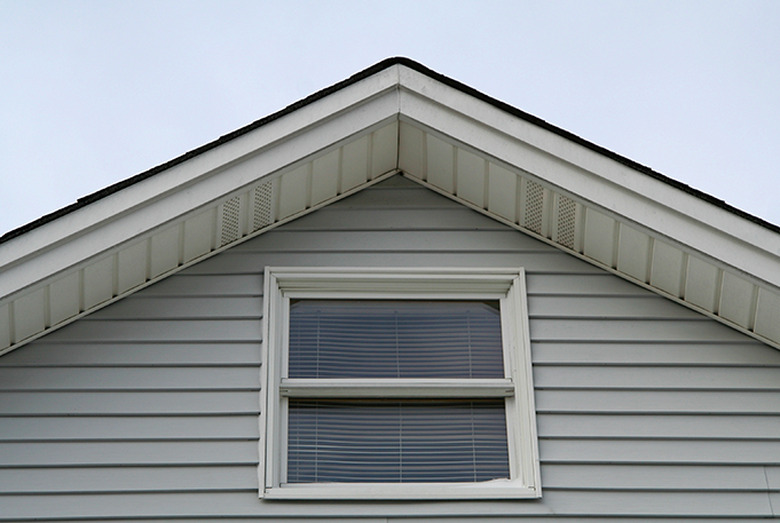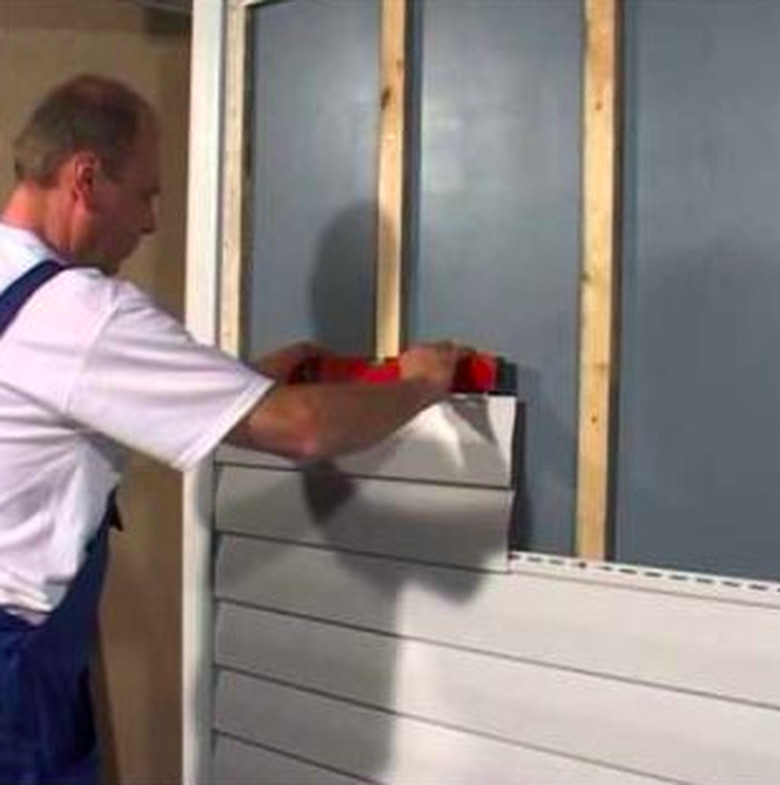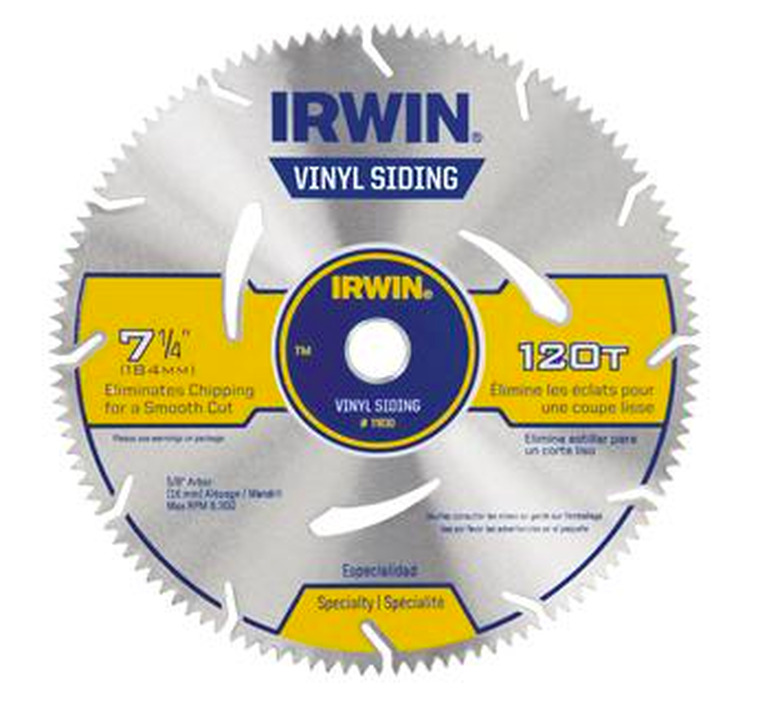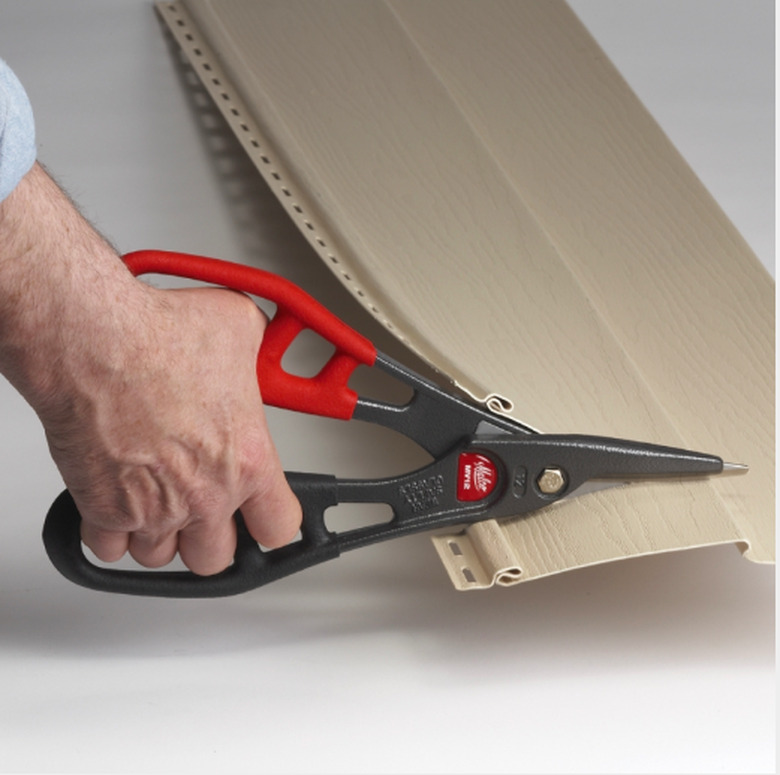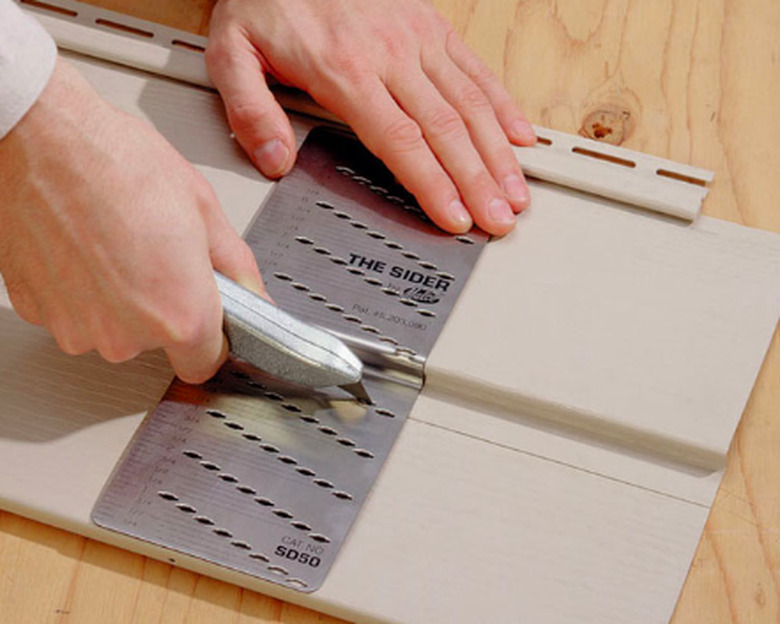How To Cut Vinyl Siding
When installing vinyl siding, you have to make accurate end cuts to fit the siding tightly against trim or seamlessly inside a J-channel. You also usually have to make at least one longitudinal cut to trim the last piece of siding that you install on a wall. Vinyl is easier to cut than most siding materials, and you can use a number of everyday tools for the job.
If you're working on a large job, you'll probably want to make end cuts with a circular saw, and that's no problem, as long as you use the right blade. For smaller jobs, you may prefer to use tin snips or even a hand saw. A plain old utility knife is the best tool for making longitudinal cuts along the length of a vinyl siding plank. You can score the material and break it in much the same way you cut drywall, but because vinyl is less forgiving, you will have to measure and cut carefully.
Marking Cutting Lines and Scoring the Vinyl Plank
Marking Cutting Lines and Scoring the Vinyl Plank
When crosscutting vinyl siding, all you need is an accurate measurement of the length of the plank and a speed square to draw an accurate perpendicular cut line. Pros draw the cut line on the back of the plank rather than the front, for two reasons. One is to avoid having part of the line visible after you make the cut. The other, more important reason, is to avoid chip-out on the face of the plank when you cut with a power saw.
When making longitudinal cuts, you should similarly draw the cut line and score with a knife on the back of the plank. It's essential to use a straightedge when drawing the line, and it's recommended to keep the straightedge in place when scoring. It's all too easy to wander off the line when scoring freehand, and that can create a noticeably ragged edge.
Invest in a Vinyl Cutting Blade
Invest in a Vinyl Cutting Blade
Professional siding installers are well aware of the damage a conventional circular saw blade can do to a thin, flexible material such as vinyl, even when cutting from the back of the plank. The traditional approach has been to use a plywood-cutting blade with a high tooth count and to install it backward in the saw. But this technique makes the saw hard to manage, making it easy to lose control and damage the plank or worse. Blade manufacturers, recognizing a market opportunity, now offer vinyl-cutting blades, which works far better than installing any type of blade backward on your saw.
To get the best cut, support the plank on a workbench and allow only a small section to overhang. If you have to cut a plank down its middle, support all of it on a work surface, set the blade depth to about 3/4 inches and allow the blade to cut slightly into the workbench surface when you make the crosscut. This method virtually guarantees a clean cut.
Cut Crosscuts and Curves with Tin Snips or a Rotary Tool
Cut Crosscuts and Curves with Tin Snips or a Rotary Tool
A good pair of tin snips can make an accurate cut that is even cleaner than a cut made by a power saw. Besides making clean crosscuts, tin snips are the only practical option when you need to make a curved cut to fit the siding around a vent pipe or some other obstruction. Hold the siding firmly while you cut it, and close the jaws of the snipper only about 2/3 of the way on each cut. This not only makes a cleaner cut, it also makes the snips easier to use.
You can also make curved cuts with a rotary tool fitted with a mini saw blade or a zip tool, which is a cutting bit that looks like a drill bit. This is the best tool to use if the siding is already hanging and you want to cut a hole for a electrical box or a vent.
How to Score and Snap a Vinyl Siding Plank
How to Score and Snap a Vinyl Siding Plank
If you've ever cut glass or drywall, you know the basic procedure for making a longitudinal cut on vinyl siding. Draw your line, set a straightedge along the line, and draw a sharp utility knife along the straightedge to score a line. Grasp the plank with both hands and bend backward, and it will break cleanly along the score line.
If you have a lot of siding to cut, it 's worth investing in a cutting template. This convenient tool latches onto the sides of the vinyl plank, and it has a series of notches for a knife blade. Choose the notch that gives you the width you need, insert the knife blade and slide the template along the length of the plank. You'll get a straight, clean score line every time.
If the siding is already hanging, and you need to make a long cut to install a window or for some other reason, you might not be able to use the score-and-break method. Tin snips are probably the safest option, but if you can't free the plank enough to get the jaws of the snipper around it, the next best option is to use a rotary tool.
